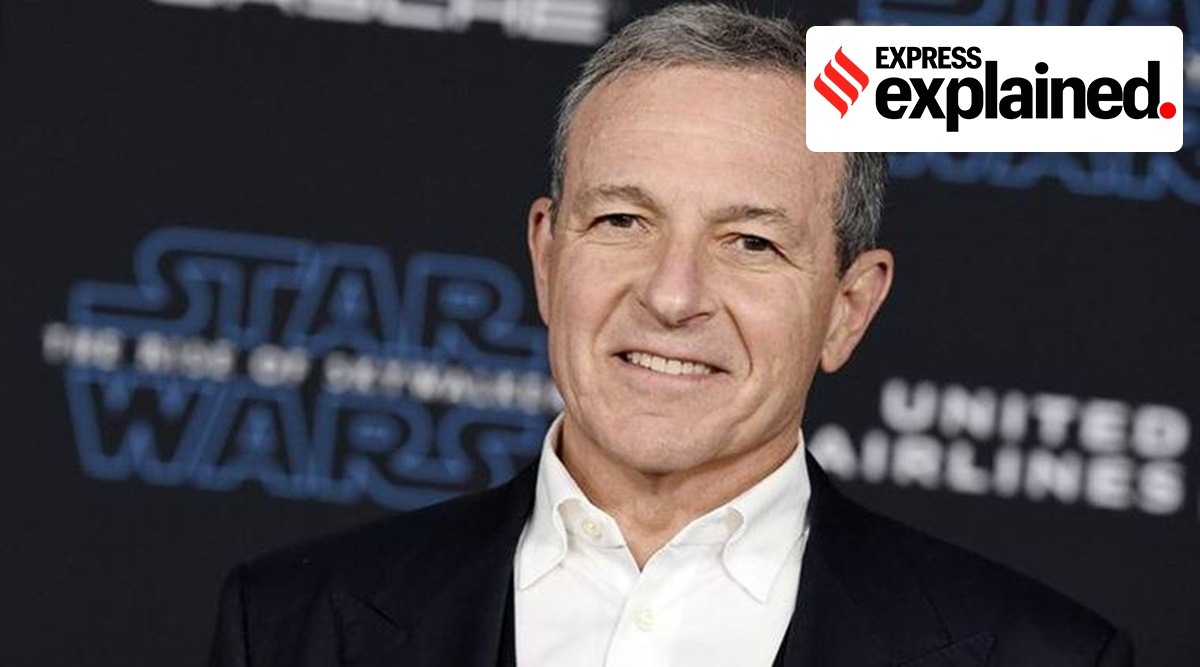In response to the news, reflecting Iger’s esteemed position in the industry, Netflix co-founder Reed Hastings tweeted, “Ugh. I had been hoping Iger would run for President. He is amazing.”

Iger’s hand-picked successor Bob Chapek did not have a similar golden run, with the company struggling to maintain the same level of market dominance and trust among investors. The former CEO’s return is seen as an attempt to fix these problems.
How did Disney get here, and what might Bob Iger’s return accomplish?
Iger’s reign at Disney
Iger, a former weatherman, joined the TV broadcast network ABC in 1974, where he developed iconic American TV shows, such as “America’s Funniest Home Videos” and “Home Improvement,” and helped in creating “Who Wants to Be a Millionaire.”
He then joined Disney and became the CEO in 2005. Under him, the behemoth acquired Pixar, Lucasfilm (founded by the creator of Star Wars, George Lucas), Marvel, Fox’s entertainment businesses and launched its Disney+ streaming service.
One of the reasons behind Iger’s success, according to multiple media reports, was the balance he was able to maintain between the demands of the company from a business perspective, and what the artists involved sought from Disney. For example, according to an article in Financial Times, Bob Chapek would often prioritise business when it came to deciding on promotional budgets and other finances allotted to production, making it difficult to keep the artists happy.
Trouble at Disney
Chapek’s style often led to criticism. A much-publicised example of this was when A-list Hollywood actress Scarlett Johansson’s spin-off movie from the Avengers franchise, Black Widow, was set to release in 2021.
Story continues below this ad
Disagreement over the release strategy led to a lawsuit against Disney, where Johansson claimed a breach of contract. Johansson also alleged that Disney’s decision to release the film simultaneously on its streaming service led to her losing $50 million in box office bonuses.
And for investors, Disney’s reduced earnings were concerning. According to Financial Times, “Shares in Disney had more than halved from their March 2021 peak, wiping about $210bn from its market value. A big miss on quarterly earnings [released] last week, including a $1.5bn loss on streaming services, rattled Wall Street even further.”
This was a symptom of general confusion in the entertainment industry world over, with audiences foregoing theatres and opting for much cheaper streaming services, but this has led to a cut in profits given the comparatively low fee of OTT platforms.
A recent earnings report showed mounting losses at its streaming media unit, including Disney+, according to Reuters. “Shares hit a 20-year low the day after the fourth-quarter earnings. The streaming business lost nearly $1.5 billion in the quarter, more than twice the previous year’s loss, overshadowing subscriber gains,” it said. Also, TV viewing as a whole is falling in the US, affecting Disney-owned channels such as ESPN and ABC.
Story continues below this ad
Further, Chapek’s response to a political issue in the state of Florida also led to brickbats from both conservatives and liberals, when he did not comment on a new law that prohibited conversations on LGBT identities at primary-level classes in schools. His later opposition to the Florida law invited opposition from the state governor, also because Disney’s biggest theme park is located in the state.
Can a ‘Boomerang CEO’ help?
“The Board has concluded that as Disney embarks on an increasingly complex period of industry transformation, Bob Iger is uniquely situated to lead the company through this pivotal period,” Susan Arnold, Disney’s chairman, said in a statement.
While Iger as CEO certainly commands goodwill that is unrivalled, with rapidly changing consumer patterns and an economic downturn in many countries, it remains to be seen if his return will be able to help things in a significant way.
The strategy itself isn’t new, and ‘boomerang CEOs’ have also been utilised by the likes of Apple, Starbucks and Twitter previously during low periods of growth. Steve Jobs coming to lead Apple in the 1990s, for instance, led to great innovation and spectacular success for the brand. Such CEOs have a proven record, and are familiar with the company’s workings.
Story continues below this ad
But according to an article in the MIT Sloan Management Review (‘Boomerang CEOs: What Happens When the CEO Comes Back?’), which analysed the performance of 167 boomerang CEOs from 1992 to 2017, the Jobs-like revival is more often the goal and not the reality. It found, “On average, the annual stock performance of companies led by boomerang CEOs was 10.1% lower than their first-stint counterparts. These results held true even when we compared them with other (non-boomerang) CEOs who were hired in times of crisis.”
Several reasons contribute to this: An older CEO might have an outdated approach in changing times and may be unwilling to adapt. The industry conditions may have changed drastically, as is the case with Disney, in a way. Also, the workers who helped them accomplish big changes may no longer be there.
Even for successful cases, the idea should be on grooming future leaders rather than going back to previous employees, says the article. While Iger has his work cut out as he returns, finding his eventual successor will also be on the task list.








































